
The Week In Charts: Exports To US Fall, CPI Cools Again, Nobel Prize Gender Gap
From India's exports to the US dwindling due to the impact of high tariffs, inflation slipping below 2% mark again and unemployment rising across groups to bank deposit growth lagging loans and the continued gender disparity among Nobel Prize winners-here's a compilation of this week's news in numbers.
Tariff toll
India's exports to the US declined 11.9% year-on-year in September, as the month saw the full effect of 50% tariffs. However, the overall export growth held up, growing at 6.7% to $36.38 billion during the month on the back of robust shipments to the UAE, China, the UK, Germany, and Bangladesh, among others. Imports, on the other hand, saw a sharper rise of 16.7% to $68.53 billion, leading to a wider trade deficit of $32.15 billion, a 13-month high. The import bill surged mainly on account of gold and silver, which saw prices soar amid global uncertainties.
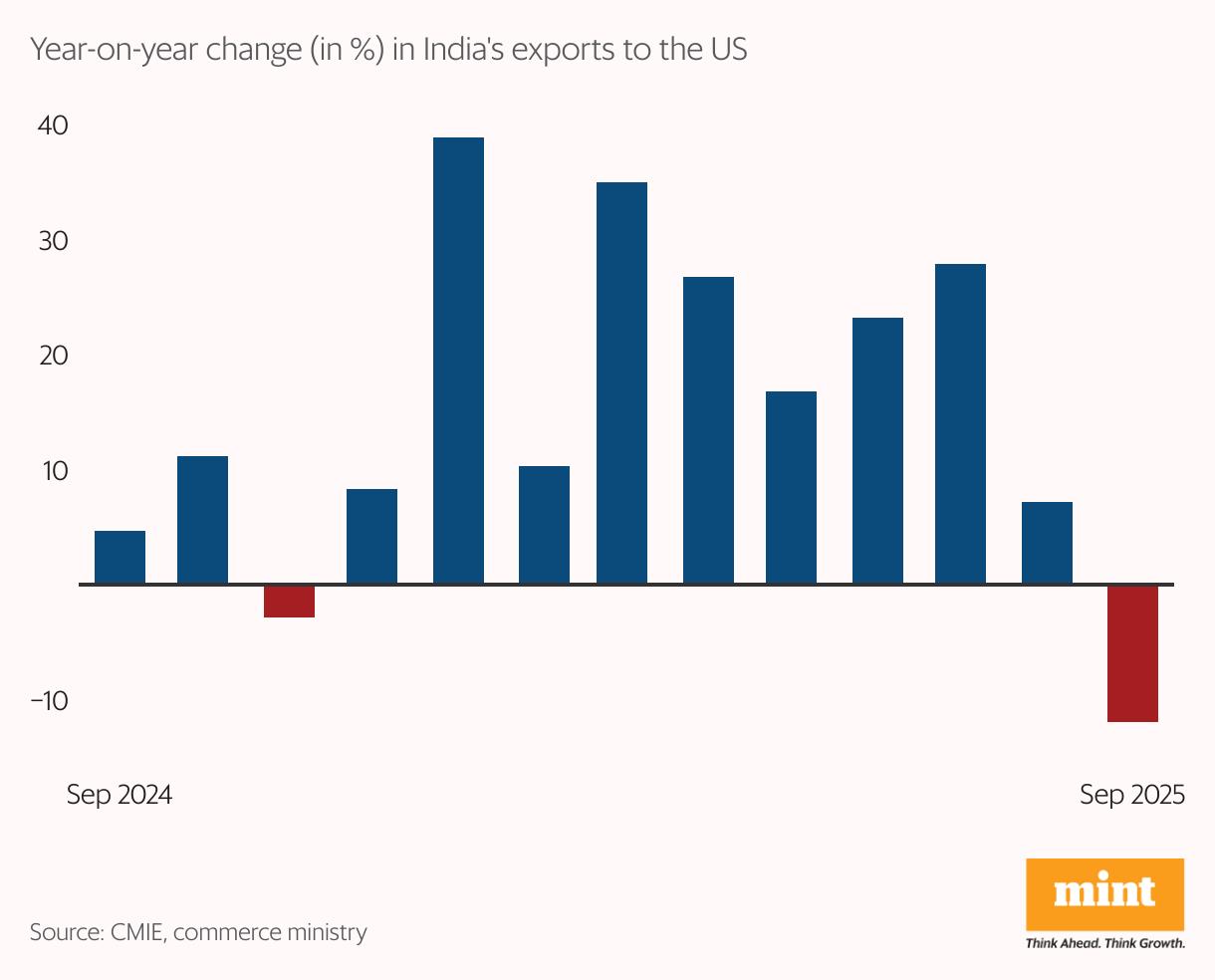
Inflation cools
Retail inflation eased to 1.54% in September from 2.07% in the preceding month, driven by lower prices of vegetables and pulses and the statistical effect of a favourable base. This marks the lowest reading since June 2017. This is the second time in three months that inflation slipped fallen below the Reserve Bank of India's (RBI) lower tolerance limit of 2%. Core inflation, on the other hand, surged to a two-year high of 4.43% due to a sharp rise in prices of gold and silver. Economists expect inflation to cool further in October to sub-1% due to a stronger base effect, as well as the impact of goods and services tax (GST) rate cuts playing out.
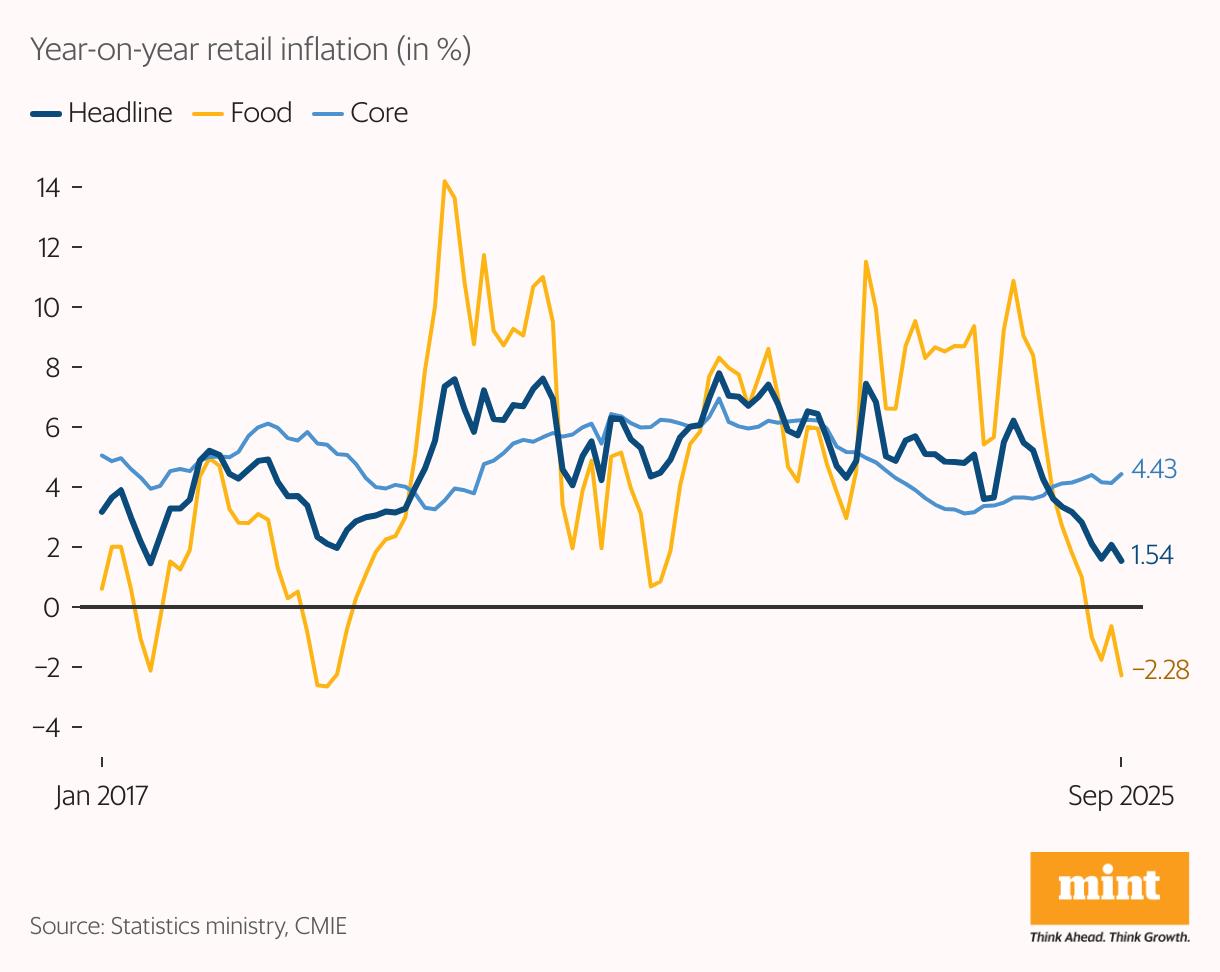
Deposit drag
Growth in Indian banks' deposits lagged credit growth during the September quarter, provisional figures released by banks showed. This marks a reversal from the previous quarter, when growth in deposits had kept pace with loans. According to RBI data, as on 19 September, India's overall credit growth was 10.4%, while deposits grew only 9.5%. The trend could be attributed to the cumulative 100 basis point rate cut by the RBI that may have boosted credit as loans got cheaper, but discouraged deposits due to lower returns. Banks rely on deposits to access low-cost funds for lending, hence their growth is crucial.
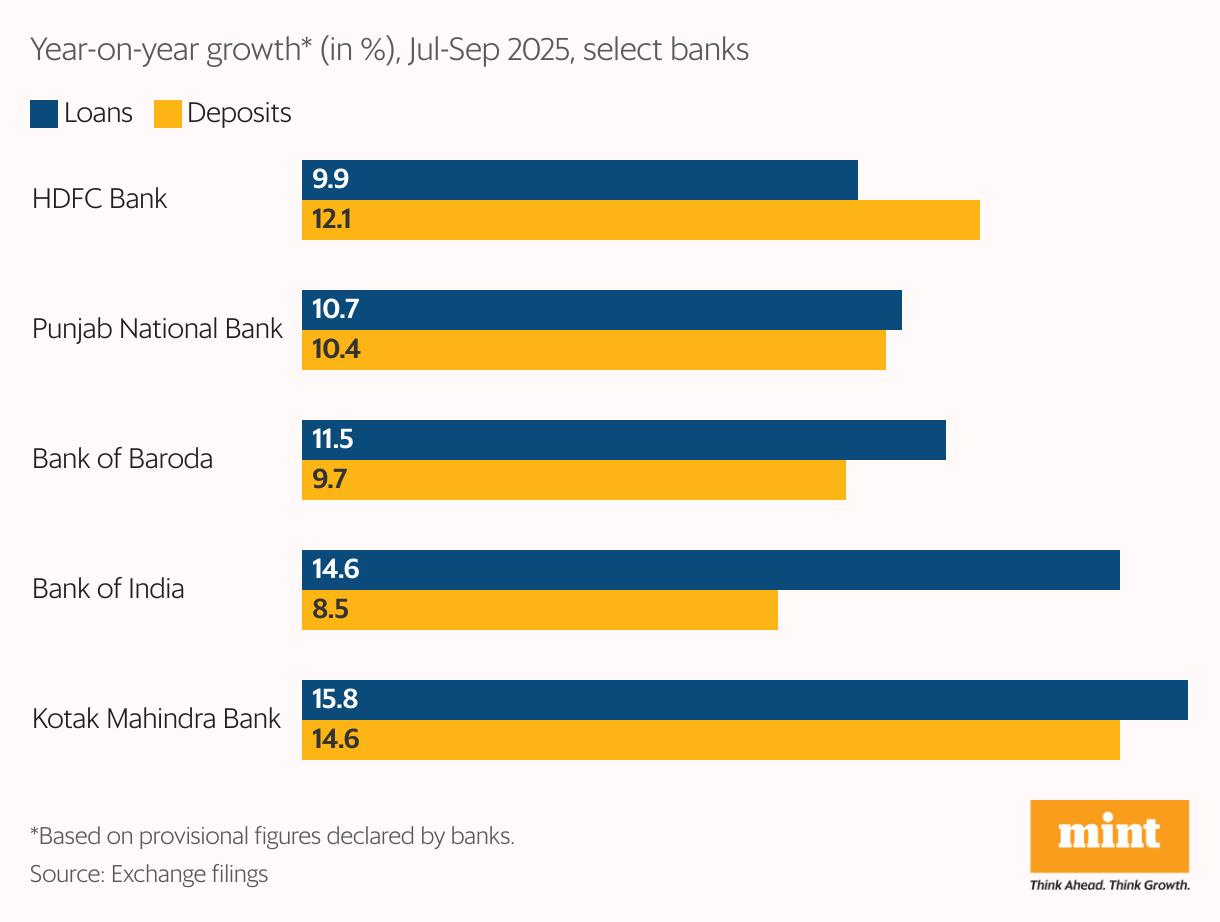
Number talk
$1 billion: The amount Dubai's Emirates NBD Bank PJSC is expected to pay for purchasing the controlling stake in RBL Bank Ltd, acquiring around 26% from institutional investors and another 25% through an open offer.
6.3%: The year-on-year rise in the government's net direct tax receipts until 12 October. Net direct tax collections since April are at ₹11.89 trillion, 47% of the ₹25.2 trillion budgeted target for the entire fiscal year.
50%: The stake Indian Oil Corp. is looking to acquire in renewable energy firm Fourth Partner Energy Pvt. Ltd (FPEL) through its subsidiary Terra Clean Ltd. The deal has an estimated equity value of about $400 million.
$15 billion: Google's announced investment for setting up artificial intelligence (AI) data centre infrastructure in Andhra Pradesh's Visakhapatnam. Microsoft has announced $3 billion and Amazon Web Services $6.8 billion in investments on India data centres.
85: India's rank in the 2025 Henley Passport Index, which measures the number of destinations passport holders can access without a prior visa. India is far behind many of its emerging market peers such as Malaysia (12) and Brazil (19).
Unemployment unease
India's unemployment rate for those aged 15 years and above rose marginally to 5.2% in September from 5.1% in August, with a rise in joblessness recorded both in rural and urban areas. Women remained disproportionately affected, with their joblessness rising 40 bps to 9.3% in urban areas and 30 bps to 4.2% in rural areas during the month. Unemployment among men, on the other hand, rose 10-20 bps to 4.7% and 6.0%, respectively, in the rural and urban areas. While monthly figures are important to note the seasonal patterns in the labour market, their volatile nature makes it difficult to accurately gauge the situation over a short period of time.
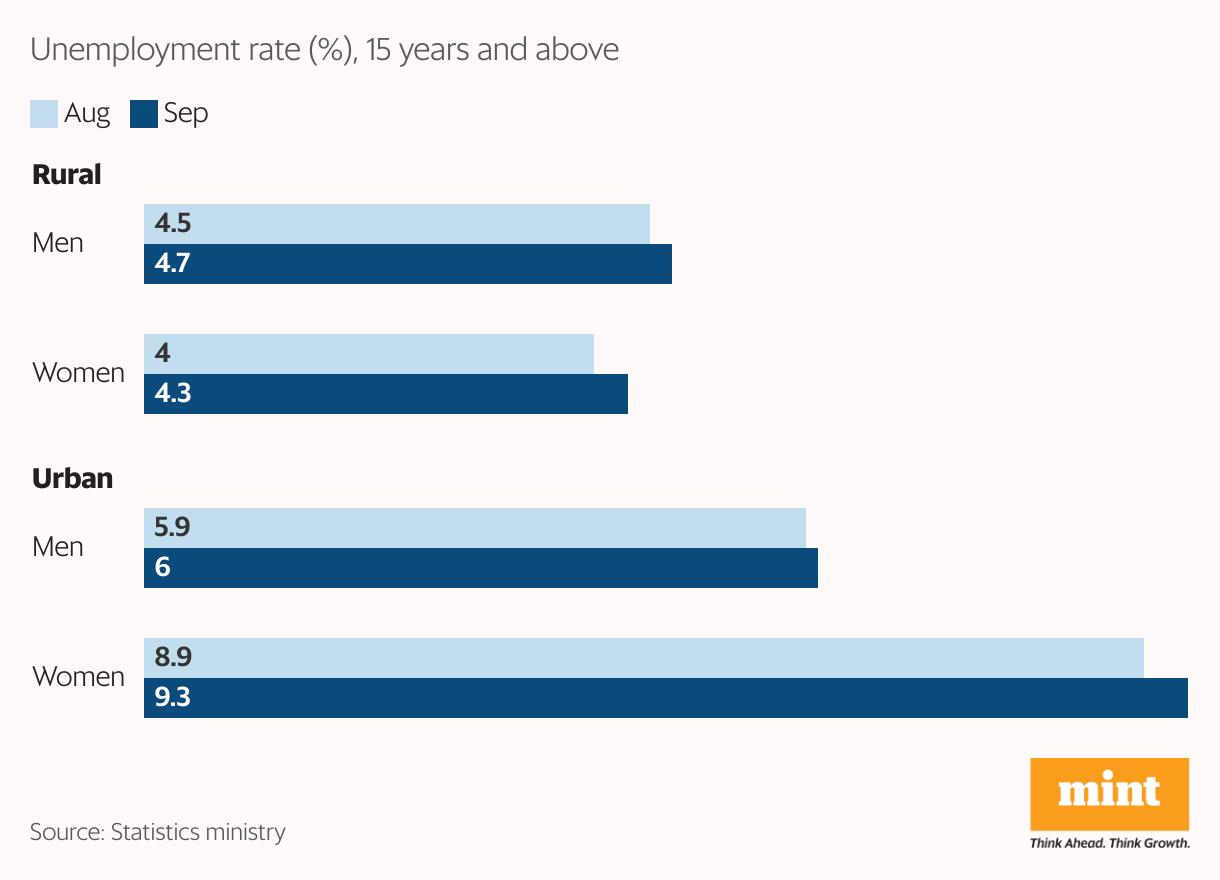
Nobel disparity
The nearly 125-year-long legacy of the Nobel Prize remains riddled with male domination. Only 67 women have won the prize so far, compared to 990 wins by men. Marie Curie remains the only woman to win twice. This year, only two women were awarded the prize: María Corina Machado (Peace) and Mary E. Brunkow (Medicine). There were 12 men who got the coveted prize this year. Last year, only one prize went to a woman, while 2023 had seen 4 women winners, including Claudia Goldin, the first woman to win solo in Economics.
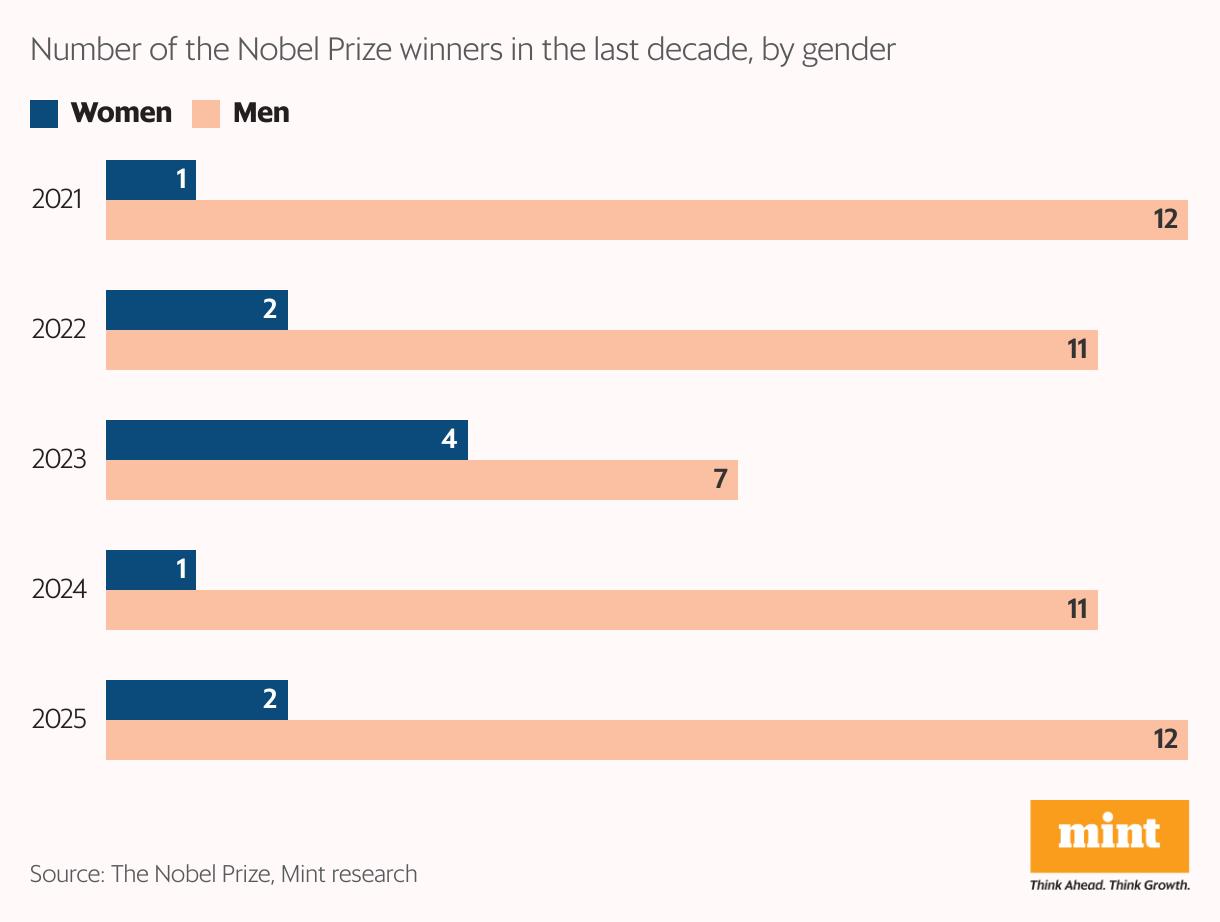
Legal Disclaimer:
MENAFN provides the
information “as is” without warranty of any kind. We do not accept
any responsibility or liability for the accuracy, content, images,
videos, licenses, completeness, legality, or reliability of the information
contained in this article. If you have any complaints or copyright
issues related to this article, kindly contact the provider above.
Most popular stories
Market Research

- Solo Leveling Levels Up: Korean Billion-Dollar Megafranchise Goes Onchain With Story
- Freedom Holding Corp. (FRHC) Shares Included In The Motley Fool's TMF Moneyball Portfolio
- From Tracking To Thinking: Edgen's“Smart Portfolio” Brings Portfolio-Native Multi-Agent Reasoning To Asset Portfolios
- Cregis At FOREX Expo 2025: Connecting Forex With Crypto Payment
- Currency Relaunches Under New Leadership, Highlights 2025 Achievements
- Cregis At TOKEN2049 Singapore 2025: Unlocking The Next Frontier Of Adoption

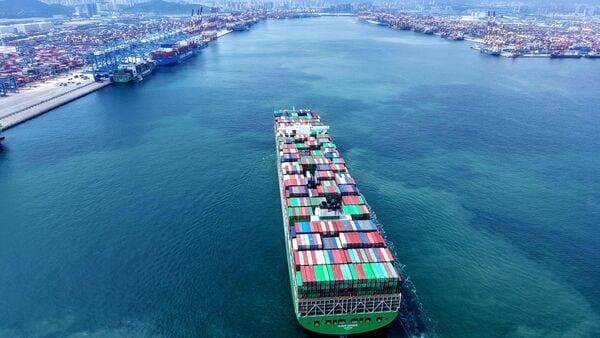


















Comments
No comment